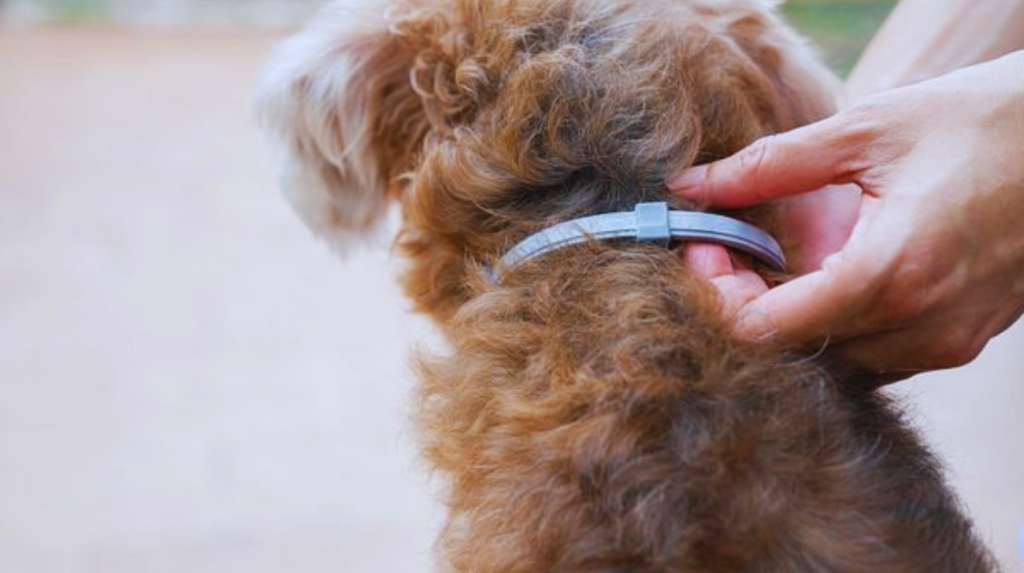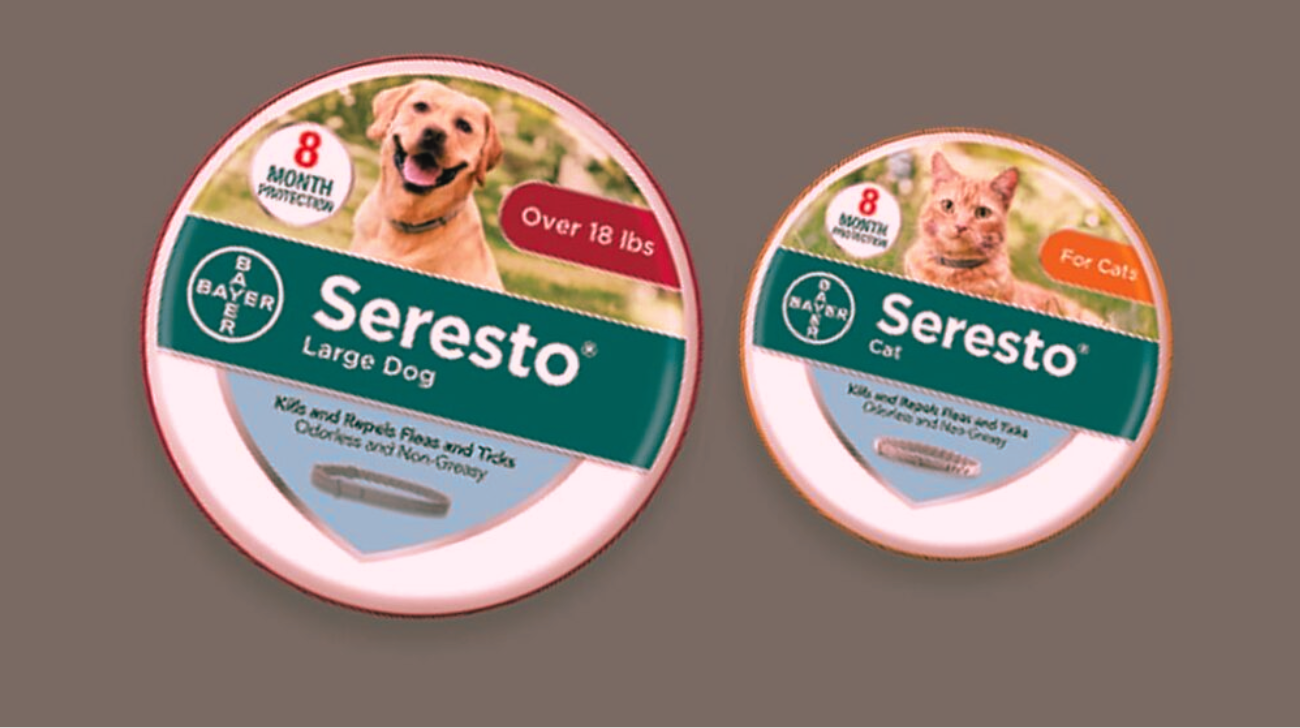The safety of Seresto flea collars, a popular product for pet flea and tick prevention, has come under scrutiny following a USA Today investigation. The report revealed that nearly 1,700 pet deaths and tens of thousands of injuries have been linked to the collars, sparking concern among pet owners and veterinarians alike. Discover the perfect collar size for an Anatolian Shepherd Dog to ensure comfort and security for your furry friend.
The collars, designed to protect pets from pests for up to eight months, release pesticides onto the pet’s fur. While effective for many, the reported adverse events have raised questions about their safety.
Veterinarians and experts are urging pet owners to stay informed and consult their veterinarians about the best course of action. Here’s what you need to know about Seresto collars and flea prevention options for your pets.
Blog Highlights
ToggleUnderstanding the Risks: What the Investigation Found
The U.S. Environmental Protection Agency (EPA) has received reports linking Seresto collars to adverse effects in pets, including:
- Lethargy
- Loss of motor function
- Skin irritation
- Seizures
The collars use imidacloprid and flumethrin, pesticides intended to repel fleas and ticks. While these chemicals are generally regarded as safe, some pets appear to have adverse reactions. The USA Today investigation noted that the true number of incidents could be even higher, as not all cases are reported to the EPA. Learn more about the unique double-layered coat of an Anatolian Shepherd and how to care for it effectively.
My Pet Wears a Seresto Collar: Should I Be Worried?
If your dog or cat is currently wearing a Seresto collar, it’s natural to feel concerned. Experts recommend a balanced approach:

- Consult Your Veterinarian: Before taking any action, talk to your vet. They can provide personalized advice based on your pet’s health history and exposure risks.
- Check for Symptoms: Monitor your pet for any unusual behavior, such as fatigue, skin irritation, or difficulty walking. If you notice anything concerning, remove the collar and contact your vet immediately.
- Review the Fit: Proper placement is essential for the collar to work effectively and safely. Ensure the collar fits snugly around your pet’s neck, allowing two fingers to fit comfortably beneath it.
How Common Are Seresto Collar Issues?
The scale of reported incidents is concerning but must be considered in context. Seresto collars are among the top-selling flea and tick products, with over 25 million units sold worldwide. While the EPA has recorded nearly 1,700 pet deaths and over 75,000 adverse incidents, these numbers represent a fraction of the total collars in use. For insights on whether Pomeranians should wear a collar, including considerations for safety and alternatives, check out this informative article.

Veterinarian Elizabeth Trepp, DVM, points out the importance of distinguishing correlation from causation. “Some pet owners might think the Seresto collar is to blame when their pet could be suffering from unrelated health problems,” she explains. Trepp, who has recommended Seresto collars in her practice, notes that she hasn’t personally encountered issues with the product.
Nevertheless, Trepp and other veterinarians are calling for further research to assess the safety of the collars more thoroughly.
Manufacturer’s Response: Addressing the Concerns
Elanco, the manufacturer of Seresto collars, maintains that there is no definitive link between the collars and reported incidents. “It is critically important to understand that a report is not an indication of cause,” said Elanco’s director of communications, Keri McGrath. The company emphasizes that:
- More than 25 million collars have been sold.
- Reports of adverse events have declined over the product’s lifespan.
- The collars undergo continuous safety monitoring.
However, experts argue that the high number of reported incidents warrants further investigation to ensure the safety of pets using the collars.
Other Flea Prevention Options
If you’re hesitant to continue using Seresto collars, there are alternative flea and tick prevention methods to consider. These include:

1. Topical Treatments
- Applied directly to the skin, usually on the back of the neck.
- Effective for controlling fleas and ticks for about a month.
- Examples: Frontline, Advantage.
2. Oral Medications
- Given as a chewable tablet or pill.
- Kills fleas and ticks by targeting them through the bloodstream.
- Often considered safer due to precise dosing.
3. Natural and Non-Chemical Solutions
- Regular grooming and flea combing.
- Diatomaceous earth or essential oils (ensure they are pet-safe).
- Environmental controls, such as vacuuming and washing pet bedding frequently.
Your veterinarian can help determine the best option based on your pet’s needs, environment, and health status. For a comprehensive guide on what kind of harness is best for a Pomeranian, including comfort and safety tips, check out this article.
Counterfeit Products: A Hidden Risk
One overlooked issue is the presence of counterfeit Seresto collars. These fake products, often sold online, may not meet safety standards and could be more likely to cause adverse effects. Veterinarian Alicen Tracey, DVM, advises purchasing flea prevention products from reputable sources, such as:
- Veterinary offices or their online pharmacies.
- Directly from the manufacturer’s website.
- Verified online retailers that require veterinary approval.
Are Seresto Flea Collars Still a Safe Option?
Many veterinarians still consider Seresto flea collars, including Seresto, to be safe and effective for most pets. “There are precautions and warnings with everything,” says Randy Wheeler, DVM, executive director of the Iowa Veterinary Medical Association. However, he adds that older or younger pets may be more sensitive to certain treatments. Here’s an overlook:
The decision to use a flea collar ultimately depends on your pet’s individual needs and risks. For pets who swim often or live in high-risk areas for fleas and ticks, other methods like topical treatments may be more suitable.
What to Do If You Notice Adverse Reactions
If you suspect that your pet is experiencing side effects from a flea collar, take the following steps:
- Remove the Collar: Take it off immediately and monitor your pet for improvement.
- Contact Your Vet: Report the symptoms and seek advice on treatment or alternative flea prevention methods.
- Report the Incident: File a report with the EPA to contribute to the investigation.
The Takeaway: Stay Informed and Consult Your Vet
While the reports about Seresto collars are concerning, they underscore the importance of making informed decisions about pet care. Not every product is suitable for every pet, and what works for one may cause issues for another. Regular consultations with your veterinarian are essential for choosing the safest and most effective flea prevention method for your furry friend.
As research into the safety of Seresto flea collars continues, pet owners should remain vigilant, rely on trusted veterinary advice, and explore alternative options if necessary. After all, keeping your pet healthy and happy is the ultimate goal. Discover if the American Eskimo is a guard dog and learn about its suitability for protecting your home.








